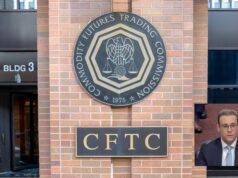Leading US-based cryptocurrency firm Circle announced its decision to terminate support for its USD Coin (USDC) stablecoin on the TRON blockchain network. This strategic shift aims at upholding trust and security standards. It reflects Circle’s commitment to maintaining the integrity of USDC amidst evolving regulatory landscapes and risk management considerations. With this decision poised to impact institutional and retail users, it is imperative to delve deeper into the factors driving Circle’s move away from the TRON blockchain.
Reasons Behind the Decision
Circle decided to discontinue support for USDC on the TRON blockchain after comprehensively evaluating the platform’s long-term suitability within its risk management framework. The company did not explicitly cite specific reasons for this move. However, recent regulatory challenges surrounding the TRON network, particularly its founder Justin Sun, have likely influenced Circle’s strategic decision-making process.
Understanding this decision’s implications necessitates examining the broader context surrounding USDC’s presence on the TRON blockchain. This includes an analysis of the regulatory landscape within which both entities operate.
Context and Implications
With USDC being the second-largest stablecoin by market capitalization, Circle’s move away from the TRON blockchain is significant. It is expected to reverberate across the cryptocurrency ecosystem. The decision underscores the importance of regulatory compliance and risk mitigation strategies in shaping the trajectory of stablecoin projects. Moreover, Circle’s decision aligns with its overarching commitment to maintaining transparency, trustworthiness, and integrity within the digital asset space.
As stakeholders navigate the evolving regulatory landscape and strategic considerations, they ponder the future trajectory of USDC. Its presence across various blockchain networks remains a topic of keen interest.
Circle’s decision to end support for USDC on the TRON blockchain marks a pivotal moment in the evolution of stablecoin projects and regulatory compliance within the cryptocurrency industry. While the implications of this decision are yet to fully unfold, it highlights the importance of proactive risk management. Adherence to regulatory standards is crucial in fostering trust and credibility within the digital asset ecosystem. As the cryptocurrency landscape continues to evolve, stakeholders must remain vigilant in navigating regulatory complexities. They also need to focus on driving innovation and adoption in the blockchain space.
Read more: Circle Weighs 2024 IPO











[…] >>> Read more: Circle Cuts Ties: USDC Exits TRON Blockchain […]